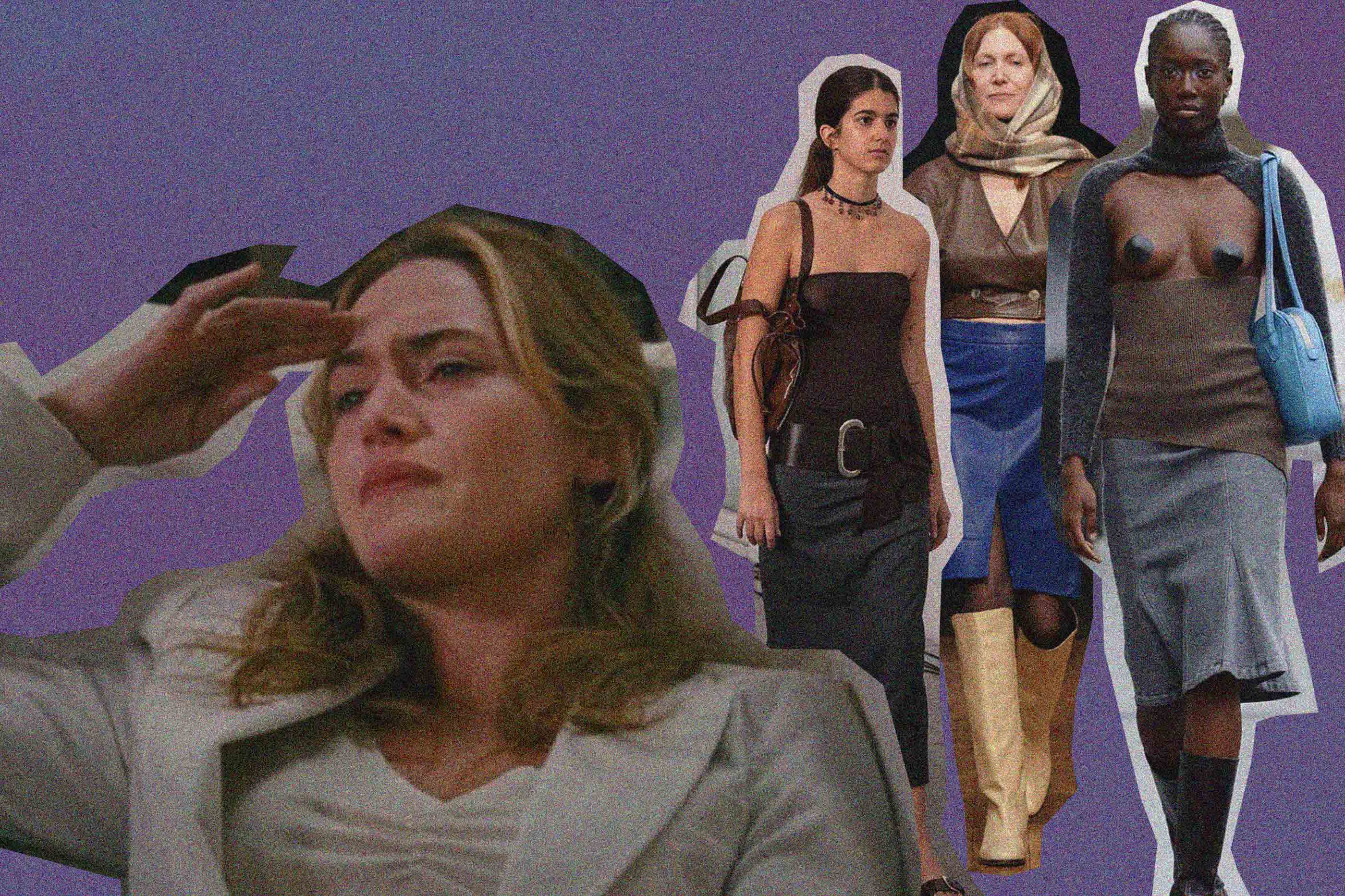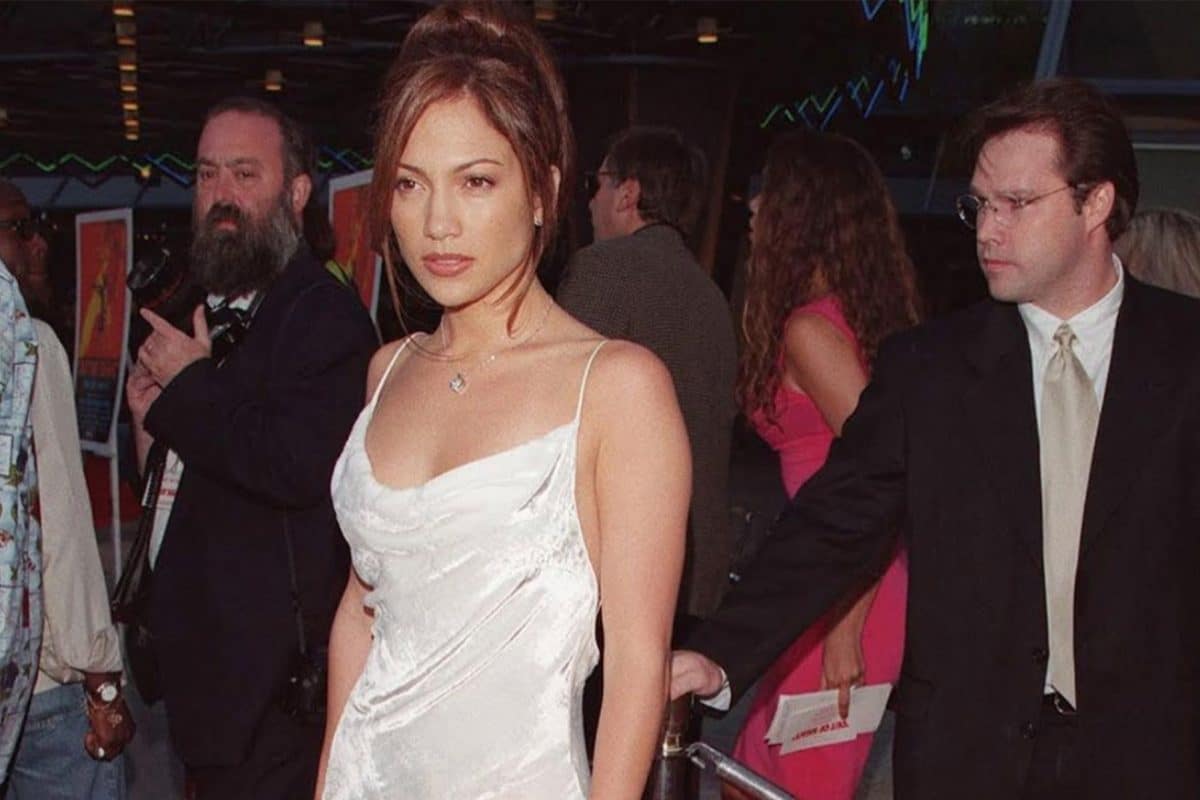
Back in August, I sat in our office and told our digital team that I felt as though we were on the precipice of a new niche trend. It was the tail end of winter in Australia, and while the Northern Hemisphere was busting out their midriffs in ultra-low-rise and Cavalli-esque Y2K revival dresses, the Southern Hemisphere was in their infancy of figuring out what it meant to adopt the rampant Y2K silhouettes while enduring the bitter cold. Out on the streets, this translated into slimmer scarves, knee-high boots, opaque tights layered with midi skirts, and an emphasis on knitwear. It didn't have a name yet, but it was showing up on the runway at Maryam Nassir Zadeh's Fall 22 collection, and in e-commerce campaigns from the likes of Paloma Wool and All As A Gentle Spring. "It's kind of like people are dressing like 2000s versions of...a frazzled English woman?" I said to the team, who looked back at me with polite, yet blank smiles.
I made a TikTok about it anyway, and overnight it garnered over 200,000 views, with over 400 comments resonating with the style of dressing. Now, as winter parks itself in the Northern Hemisphere, the hashtag #frazzledenglishwoman has 8.4 million views at the time of writing. TikTokkers are recreating their own versions of wintry, 2000s-adjacent outfits to Hans Zimmer's Maestro, and in the past week, countless style publications have published their own hot takes on the micro trend.
@russhmagazine Is this a thing? The era of the sensible yet frazzled 2000s English woman is upon us! #y2kaesthetic #y2kenglishwoman #frazzledenglishwoman #y2kstyle ♬ cant get you out of my head. - 🦆
At its bones, the Frazzled English Woman trend was only supposed to convey an energy that was highly synonymous with 00s layering. England being the most obvious reference point considering its notoriously brisk weather patterns call for a pair of tights practically 9 out of 12 months of the year (I know this because contrary to online discourse, I am English). Its poster girls are aughts-era Keira Knightley, Kate Winslet, Renee Zellweger, Helena Bonham Carter, et al. Its defining characteristics are the aforementioned clothing items. But a reoccurring theme in the public dissection of the trend, is that it seems to miss the point almost entirely, speaking to wider questions around the dissonance between online and the "real world", a collective disdain towards the revival of micro trends, and the internet's tendency to take things highly literally.
2022 has been an interesting year for fashion. From a trend perspective, Y2K revival has remained overwhelmingly strong off the back of viral runway moments in the SS22 season, spurring the return of subcategories and styling pieces that many of us never thought we'd be revisiting this soon after they dissolved from popularity; like skirts over jeans, low rise trousers, and – yes, skinny scarves. The 2010s were also brought up, with internet fashion people proclaiming that "Twee" was back and Hedi Slimane dedicating two entire Celine collections to the return of Indie Sleaze. We witnessed the rise of "barbiecore", the "weird girl aesthetic", the "clean girl aesthetic", a fixation on football-adjacent clothing, and countless more micro trends. It's not surprising that people are recoiling at the idea of mimicking middle class English women as the next big thing, even if it does ironically lean on classic wardrobe staples.
It begs the question: When our hypothesis for things born online is that they are exclusively online and can't/won't be interpreted in settings of reality, are we able to find meaning in these themes outside of the obvious discourse? Is online dissonance taking over?
In some ways, it feels as though the Frazzled English Woman aesthetic has been the perfect launchpad for a discussion of this nature. One afternoon, I made a video in five minutes about a trend I was witnessing emerge on the streets and on the runway, and used imagery from Richard Curtis films as my pop-culture reference of choice. But once posted on TikTok – the app that has become notorious for pushing viral micro trends – it became nothing more than exactly that.
It appears to be an increasingly chronic issue when we consume so much these days via sensationalised headlines, Instagram infographics, and 30 second videos that leave little room for nuance, driving us all to form half-baked opinions off the back of the original half-baked opinion, diluting discourse until it is watered down to a flavourless take on a topic that barely had any meaning to begin with. The example here, for argument's sake, can be seen through the theory that the Frazzled English Woman aesthetic is to dress as though Kate Winslet does in The Holiday, instead of digesting the references presented and coming to an individual conclusion on how this style of layering may be reinterpreted through a modern lens (as cyclical trends always are).
It feels as though, with access to visual references at an all time high, many of us have lost the ability to think about getting dressed in a formulaic way that is influenced by film, music, art, religion, culture and socio economic status, AKA subculture. Instead we've resorted to directly copying whatever is fed to us through our screens to capitalise on individually stylish outfits, rather than embarking on the journey of discovering personal style through a painful and embarrassing archive of terrible style choices like the good old days.
I recently wrote about this when dissecting Portia's outfits in The White Lotus, which were generally, and constantly, in shambles – just as costume designer Alex Bovaird intended. It was a move to communicate how confused Gen-Z really is when it comes to style and life at large these days, and it resonated perfectly.
Ultimately, the internet has become our new way of exploring a painful and embarrassing archive of terrible style moments through 30 second videos and an endless slew of "core's" and "aesthetics." And whether or not serious fashion people care to admit it, our industry is in crisis mode. Is it too much to ask to have a little fun along the way, and put silly, frivolous names to trends that will fizzle out with everything else in seasons to come? Let me get lost in the discourse, I'm ready to shout into the void!
images via: Maryam Nassir Zadeh, and Paloma Wool.



